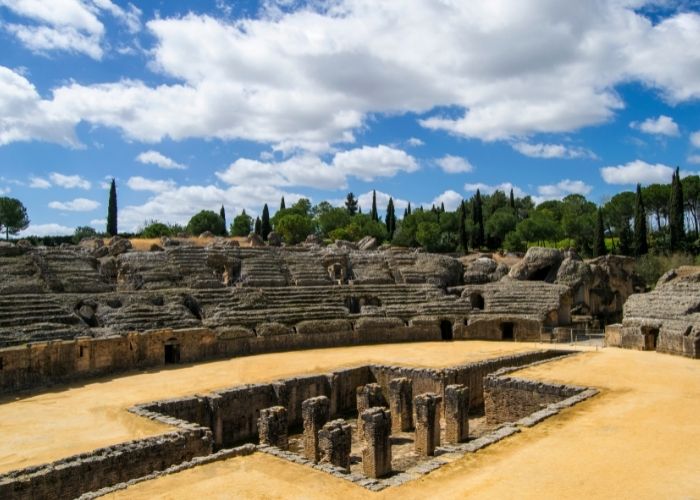SEVILLE – The remains of Itálica, the great Roman city from the beginning of our era, lie in Santiponce, near Seville.
The Ministry of Culture and Historical Heritage was responsible for the excavations. The first two mosaics with black and white tesserae (small pieces of glass used for mosaics), and a third with colourful tesserae, were found covering an area of about 16 square metres. That is an increase of 75%.
Mosaics from Itálica seemed lost
The archaeological work, should be completed by 22 June. It is being carried out in the eastern part of the Casa del Patio Rodio. This was partly excavated in the late 19th and early 20th centuries. It seems to concern the entrance area and the rooms adjacent to the large central courtyard. Earlier excavations had revealed the presence of fragments of mosaic pavement in these rooms. Although, according to earlier reports, they seemed to be in very poor condition or were even considered lost.
Nevertheless, during the latest excavations, these three special mosaics have now been found. Director of archaeological work, Fernando Amores said “They give a more complete picture of the architectural configuration of this building than was previously known”. Amores is also a professor at the University of Seville.
This accurate description of the architectural remains of the house also reveals the special characteristics of this structure. And that in turn leads to questioning the typological identification with the Rhodian model.
The excavated rooms seem to be domestic rooms with different functions, such as a dining room (triclinia). The Casa del Patio Rodio was first discovered in 1873 by Demetrio de los Ríos. Furthermore, it was partially excavated by different researchers between 1930 and 1942.
ItálicUS
The excavations took place as part of the general research project Itálicus. This has been worked on since 2014 by a multidisciplinary team led by Fernando Amores of the University of Seville and researchers from other academic institutions. The overall objective of the project is to deepen the historical and heritage knowledge of the residential areas of the Roman city of Itálica by applying new tools and methods.
The Casa de Patio Rodio was a pilot project. The archaeological excavations, which were complemented by photogrammetric recordings made by drones, are part of the Master Practicum in which 32 students from different fields (History, Art History, Humanities, Fine Arts and Restoration) from different parts of Spain, as well as from abroad (Mexico and Columbia) participated.


